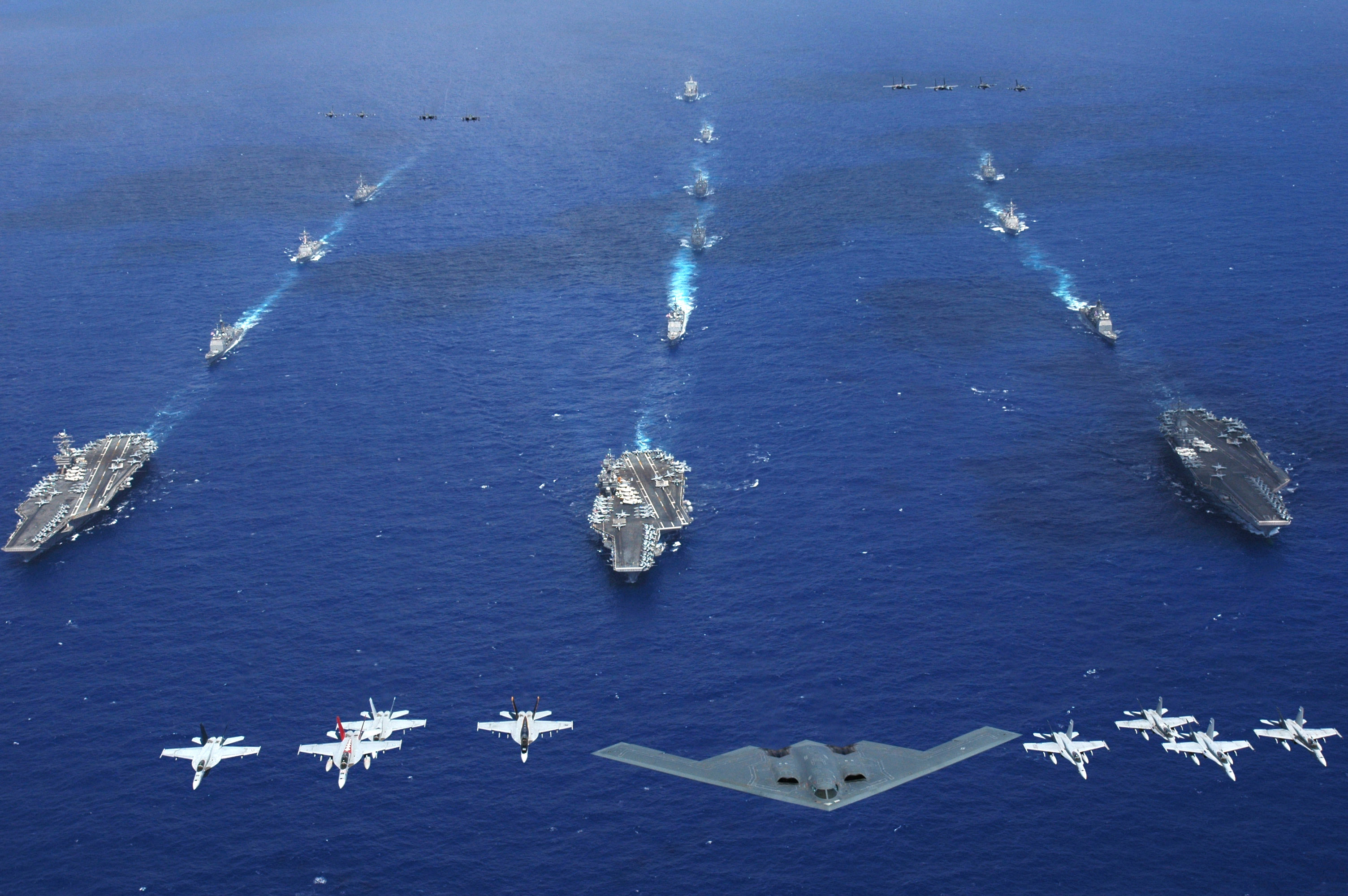Within the intellectual circles of U.S. grand strategy, Air-Sea Battle (ASB) has long been a contentious idea. ASB was widely touted by inner circles as an alternative strategy to the counter-insurgency tactics of the War on Terror, and a tentative plan on dealing with state threats such as China and Iran. First legitimized in the 2010 Quadrennial Defense Review, the desire was to create a “joint air-sea battle concept” that could provide a full spectrum dominance in warfare “to counter growing challenges to U.S. freedom of action.” In military parlance, the terminology is anti-access/area denial (A2/AD), defined as the capabilities of the enemy to deny freedom of movement on the battlefield. As China created new strategies to exert control over the Western Pacific, the United States has lost its maneuverability there. First it set up a missile system; then in 2013, it announced an Air Defense Identification Zone; and recently it started creating artificial islands in the South China Sea. The goal of ASB is to reverse these trends, and help “set the conditions at the operational level to sustain a favourable conventional military balance.”
 Eisenhower and embarked Carrier Air Wing 7 are on a regularly scheduled deployment in the U.S. Naval Forces Central Command area of responsibility in support of maritime security operations. (U.S. Navy photo by Mass Communication Specialist 2nd Class Miguel Angel Contreras) (Released)[/caption]
Eisenhower and embarked Carrier Air Wing 7 are on a regularly scheduled deployment in the U.S. Naval Forces Central Command area of responsibility in support of maritime security operations. (U.S. Navy photo by Mass Communication Specialist 2nd Class Miguel Angel Contreras) (Released)[/caption]
ASB has received its fair share of criticism in terms of its efficacy and prioritizing. ASB has been denounced for both its cost, and prioritizing the Navy and Air Force over the other branches of the military. Not all agree on ASB’s use of conventional warfare, as the strategy could instigate a security dilemma: some of China’s more aggressive actions could be seen as a response to ASB, thus creating a vicious circle where both try to gain an advantage over the other. The price tag of ASB is enormous, with a 2013 estimate totaling costs at $523 billion by 2023. Much of ASB’s premises are also hypothetical: the strategy forecasts the idea of total war with China, and thus does not take into account asymmetric warfare strategies. Among the biggest weaknesses is relegating cyberwarfare to a secondary role of assisting an assault, despite its becoming a more central tactic in modern combat.
Other critics oppose ASB for escalating a conflict to total war, or even a nuclear conflict. To gain freedom of action, ASB requires mainland strikes on China to disable its anti-air defenses. Such an attack would become overly provocative towards China, and would raise any minor conflict to a global one, with the risk of China’s responding with a nuclear strike. Memos on ASB recognize that “attacks on each side’s space early warning systems would have an immediate effect on strategic nuclear and escalation issues.” Proponents of ASB retort that it is only a concept and not meant to be considered guidelines on how to attack China. Since ASB constitutes of only one small office of planners, its influence is capped. Nevertheless, the massive effect ASB has had on defense budgets and planning showcases its attractiveness within the armed forces.
 On January 8, 2015, a memo circulated by the Department of Defense announced “the development, evaluation, and implementation of a Joint Concept for Access and Maneuver in the Global Commons (JAM-GC),” announcing a replacement to the concept “formerly known as Air-Sea Battle.” The Department of Defense later proclaimed the name change “presents a better opportunity to rename the concept to better represent its full scope,” as well as properly incorporating U.S. land forces into the grand strategy.
On January 8, 2015, a memo circulated by the Department of Defense announced “the development, evaluation, and implementation of a Joint Concept for Access and Maneuver in the Global Commons (JAM-GC),” announcing a replacement to the concept “formerly known as Air-Sea Battle.” The Department of Defense later proclaimed the name change “presents a better opportunity to rename the concept to better represent its full scope,” as well as properly incorporating U.S. land forces into the grand strategy.
To a degree, it’s still uncertain if the name change was a change of policy, or the result of bureaucratic infighting. The Army has long been wary of ASB for prioritizing the Air Force and Navy. Back in 2010, Chief of Staff of the Armed Forces Ray Odierno said the United States “does not need to invent a scenario…and then present a single and inflexible solution to it.” His eventual adoption of ASB-style “jointness” has been criticized as a way to salvage the Army’s budget. Trials were conducted to show how the Army could also cooperate with navy ships, such as landing and launching their helicopters off the Navy’s aircraft carriers. According to this point of view, Odierno pushed to ensure ASB would not become the sole product of the Navy and Air Force, and JAM-GC was created to properly bring the Army into the decision-making.
Although all military branches have faced budget cuts in recent years, new threats like ISIS and an increased reliance on tactics such as drone warfare has had the army receive a stronger budget reduction than its counterparts. For the fiscal year 2015, the Navy received 3.1% less than 2014; the air force received 0.9% more, and the army lost 11.1%. Facing such sharp reductions, with the Air Force and Navy now receiving more funding than the Army, Odierno’s desire to join ASB becomes clear.



